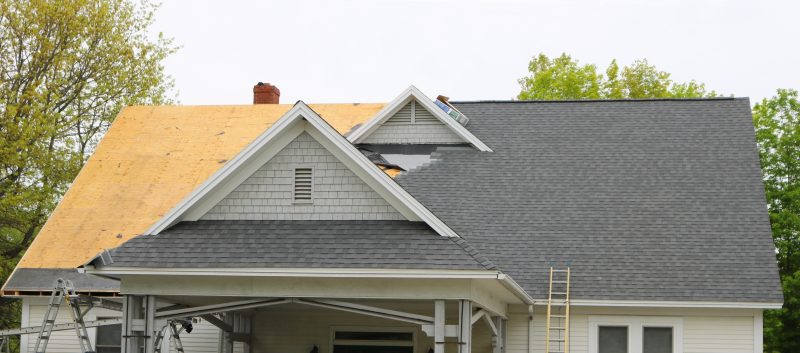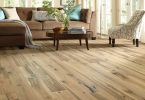
When Do I Replace my Roof? A solid roof over your head is crucial more so when you are accustomed to a warm, cozy and leak-free home. However, regardless of how durable your roof is and how well you take care of it, there will come a time when you will have to handle repairs and eventually have to replace it. But how do you know when it is time to call in a roofing contractor for a roof replacement? Here are the main signs you should look for
Approaching It’s 25th Birthday
When Do I Replace my Roof? The lifespan of asphalt shingles is between 20 and 30 years. What this means is that by the time your roof is approaching the end of its lifespan, it will have many problems. To avoid high maintenance costs, you need to replace a roof before the end of its lifespan. Needless to say, maintaining a 40-year-old asphalt roof will be more expensive than replacing it.
By the time an asphalt roof is approaching its 25th birthday, you will have about 5 to 10 good years left on it. Sometimes you will be forced to replace the roof even earlier depending on its condition. For example, if your house is in an area that experiences high temperatures, your asphalt roof will be more worn out than that of a home in a cooler region. In addition to that, if you live in a development and the neighbors start replacing their roofing, this is a sign you need to do the same.
Shingles Are Curling
There are two ways in which the shingles can curl. The first is by cupping where the edges of the shingles bend upwards. The second is clawing where the edges remain flat while the middle comes up. Curling is a sign of weathering and it indicates problems; most probably leaks. Depending on the extent of curling, you will have about 5 years before you are forced to replace the roof.
Entire Shingles Are Missing
There is no harm in replacing a couple of missing shingles. It is, however, good to note that getting the color of the new shingles to match with the existing ones will be close to impossible. This is because the granule colors have changed significantly over the years. The colors of shingles also change due to weathering.
You can keep patching the missing shingles until the area is too big. The last thing you want is for your home to have a roof that looks like a checkerboard. When you start noticing this or huge patches that are visible from a distance, then you need to replace the roof.
Cracked Shingles
Wind is the number one cause of cracked shingles. Just like with missing shingles, if only a handful of shingles are cracked, you can get away with replacing them. However, if the cracking is not isolated to a single area but in random areas throughout the roof, a roofing contractor will advise that you consider installing a new roof. When there are random cracked shingles throughout the roof, you have about 3 to 5 years before you need a complete roof replacement.
Granules In The Gutters
If your asphalt roof is new and you spot granules in the gutters, there is no need for alarm. This is because what you see is loose extra granules falling off. However, if your roof is 10 to 15 years old and you spot granules in the gutters, there is a problem. Granules are what protect asphalt from the sun. When the granules fall off, the shingles will start baking in the sun and the quality will drop rapidly. When you start noticing the granules in the gutter, this is a sign that your shingles are already halfway through the lifespan.
Algae Or Moss On The Shingles
This should not cause you to panic. Algae or moss on the shingles is simply a cosmetic problem. Homeowners that have the money to spare may choose to replace their roofs because they hate the aesthetics and because most of the new shingles today are moss and algae resistant.
When you spot moss or algae on your shingles, don’t try and wash or scrap the green stuff on your own. Scrapping will chip the granules off the shingles thus rendering them useless. The wash you should consider is one that is equal parts bleach and water to get rid of the moss or algae. There are also zinc strips that can be installed at the peak of the roof to eliminate the issue. If you go ahead with roof replacement, opt for tiles that have been treated to be algae-resistant.
Sunlight Can Be Seen In The Attic
This is not a good sign. If light can get in, cold air, rainwater and snow will also get through. You should check for water stains and check if they change shape after a few rainfalls. If the shape of the water stains changes, there is an active leak. You need to contact a professional to inspect the extent of the damage and to patch the leaks. Major leaks, structural damage and age factors might make it cost efficient to just replace the roof.
The Whole Roof Is Sagging
If you notice sagging, it is time to panic. When the roof is sagging it is an indication that there are major structural problems. The issue could be with the decking or with the supports in the foundation. Yes, you might not be in imminent danger but you need to act fast. Small and localized sagging is easy to take care of. Always call in a roofing contractor when you notice a droop or depression on your roof. The sooner you act the better.
Now you know how to determine if you need a roof repair or replacement. The key to avoiding huge repair costs is to get routine maintenance at least once every six months. Doing so will help avoid expensive premature roof replacements. But when you do need a new roof, you must never put it off. It could cost more than a roof if you take too long to act.
For more great ideas, click here.
For more unique items for your home, click shopCHT.com.
Latest posts by Canadian Home Trends (see all)
- Capilano Outdoor Living - November 17, 2024
- The Mighty Mudroom - November 17, 2024
- Patio Makeover with Maria Killam - November 17, 2024





